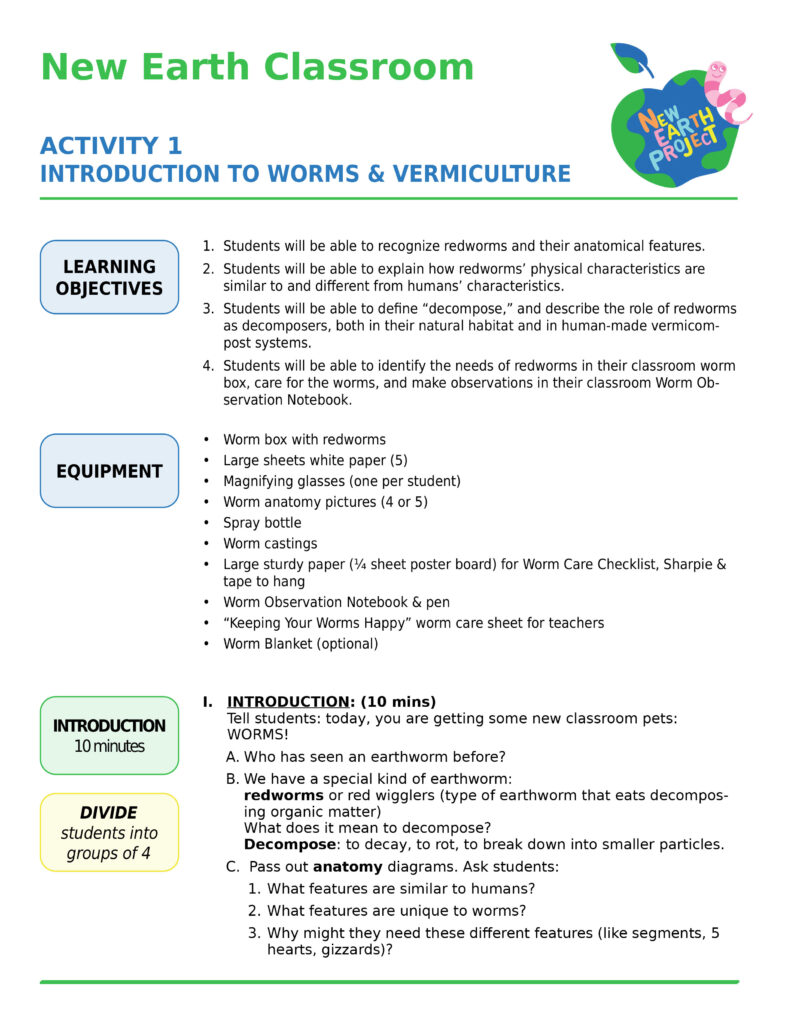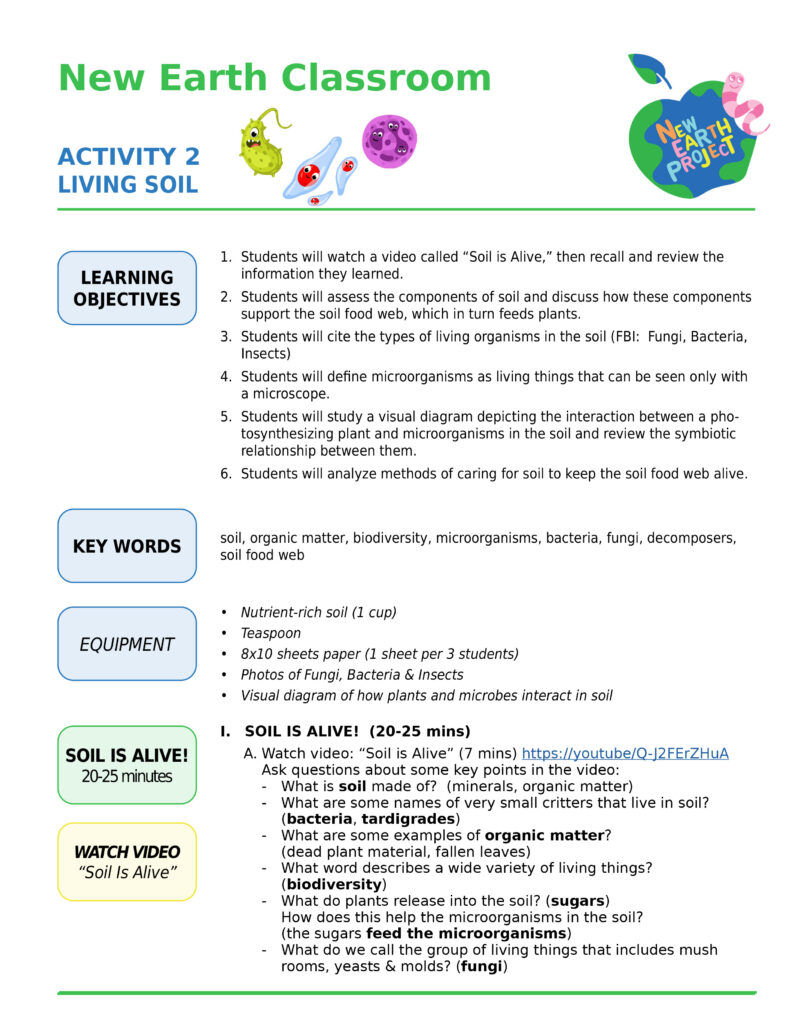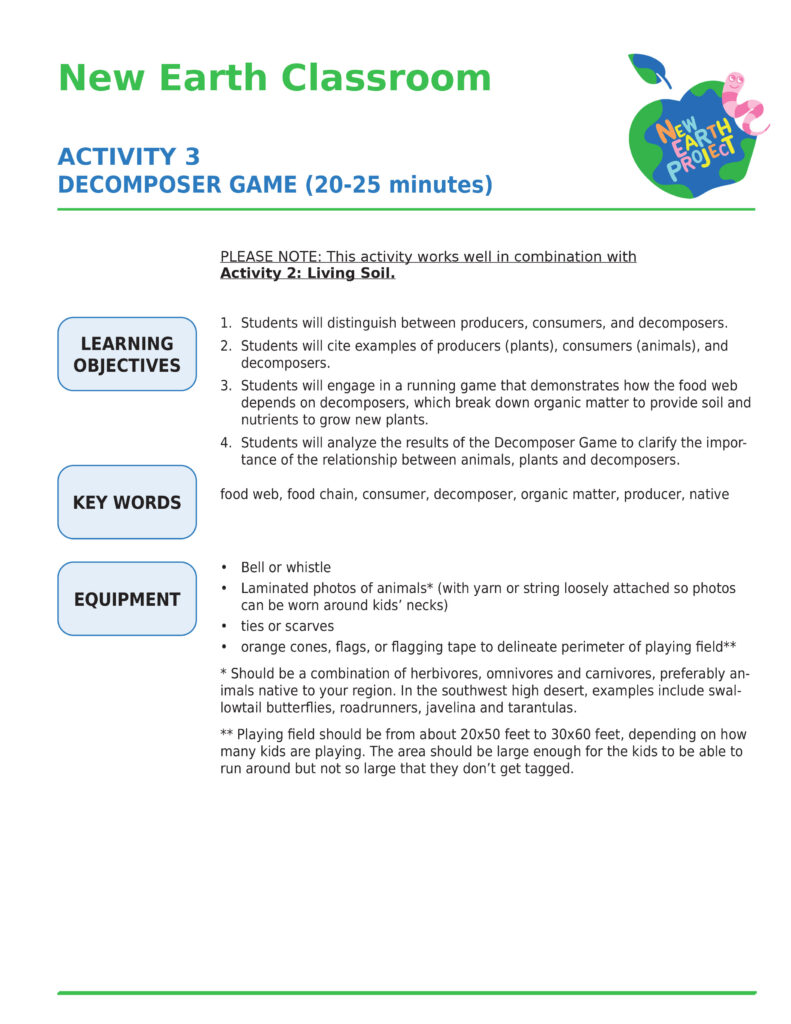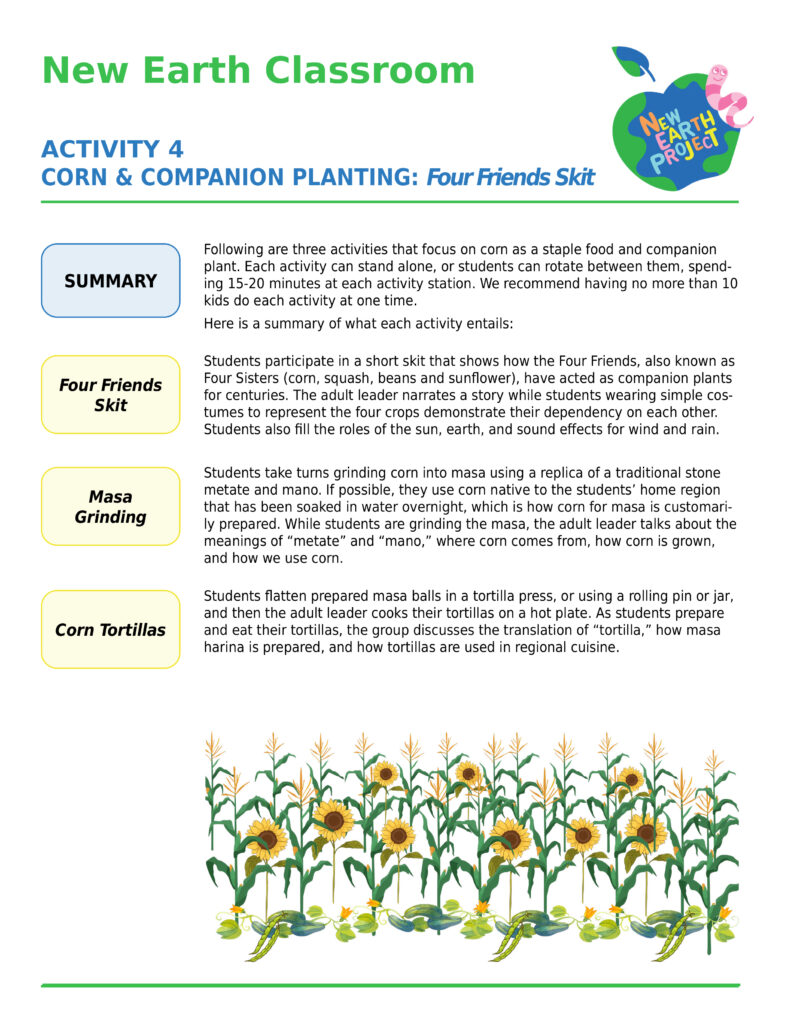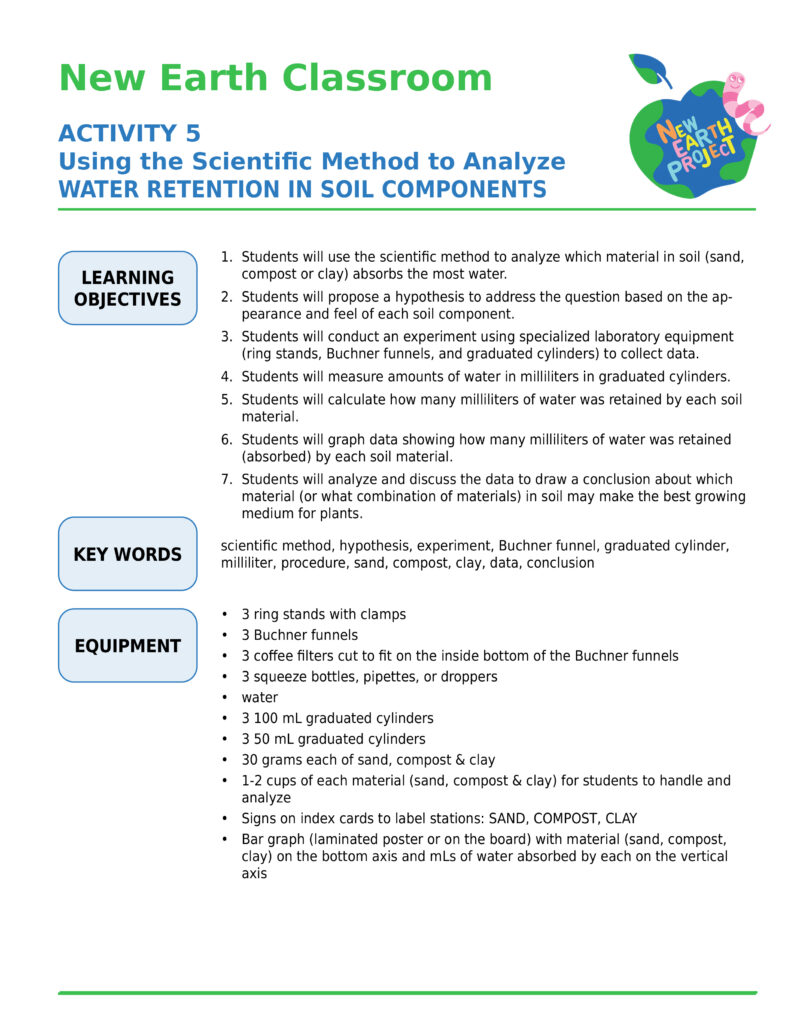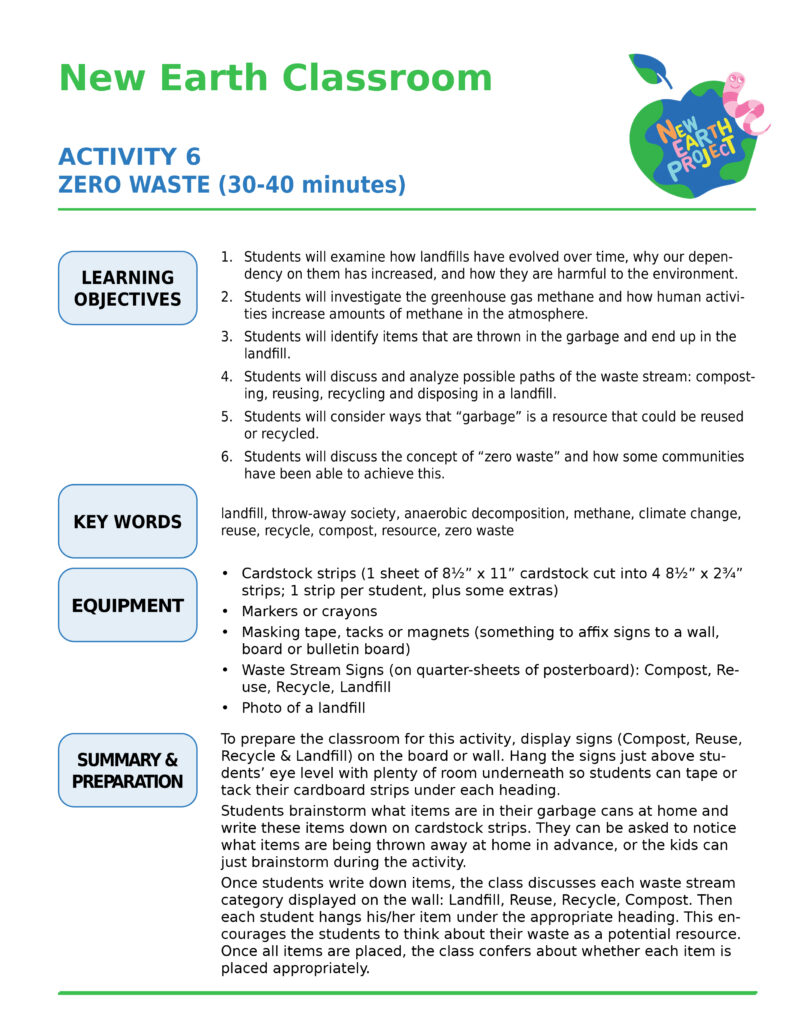Download Classroom Activities
Activity 1: Introduction to Worms & Vermiculture
In this lesson:
Recognize redworms and their anatomical features; explain how redworms’ physical characteristics are similar to and different from humans’ characteristics; define “decompose,” and describe the role of redworms as decomposers, both in their natural habitat and in human-made vermicompost systems; identify the needs of redworms in their classroom worm box, care for the worms, and make observations in their classroom Worm Observation Notebook.
- Introduction to Worms and Permaculture
- Keeping Your Worms Happy – Learn how to care for your worms: the environment they need, what to feed them, how to take care of their bedding, and more!
- Worm Anatomy – A detailed diagram of a worm
Activity 2: Living Soil
In this lesson:
Students will watch a video called “Soil is Alive,” then recall and review the information they learned; assess the components of soil and discuss how these components support the soil food web, which in turn feeds plants; cite the types of living organisms in the soil (FBI: Fungi, Bacteria, Insects); define microorganisms as living things that can be seen only with a microscope; study a visual diagram depicting the interaction between a photosynthesizing plant and microorganisms in the soil and review the symbiotic relationship between them; analyze methods of caring for soil to keep the soil food web alive.
- Living Soil
- Soil is Alive – YouTube video
Activity 3: Decomposer Game
In this lesson:
Students will distinguish between producers, consumers, and decomposers; cite examples of producers (plants), consumers (animals), and decomposers; engage in a running game that demonstrates how the food web depends on decomposers, which break down organic matter to provide soil and nutrients to grow new plants; analyze the results of the Decomposer Game to clarify the importance of the relationship between animals, plants and decomposers.
Activity 4: Corn & Companion Planting
In this lesson:
Students will participate in three activities that focus on corn as a staple food and companion plant. Each activity can stand alone, or students can rotate between them, spending 15-20 minutes at each activity station. We recommend having no more than 10 kids do each activity at one time. Each activity can be downloaded separately.
- Four Friends Skit: Students participate in a short skit that shows how the Four Friends, also known as Four Sisters (corn, squash, beans and sunflower), have acted as companion plants for centuries. The adult leader narrates a story while students wearing simple costumes to represent the four crops demonstrate their dependency on each other. Students also fill the roles of the sun, earth, and sound effects for wind and rain.
- Masa Grinding: Students take turns grinding corn into masa using a replica of a traditional stone metate and mano. If possible, they use corn native to the students’ home region that has been soaked in water overnight, which is how corn for masa is customarily prepared. While students are grinding the masa, the adult leader talks about the meanings of “metate” and “mano,” where corn comes from, how corn is grown, and how we use corn.
- Corn Tortillas: Students flatten prepared masa balls in a tortilla press, or using a rolling pin or jar, and then the adult leader cooks their tortillas on a hot plate. As students prepare and eat their tortillas, the group discusses the translation of “tortilla,” how masa harina is prepared, and how tortillas are used in regional cuisine.
- Tortilla Recipe
Activity 5: Using the Scientific Method to Analyze Water Retention in Soil Components
In this lesson:
Students will use the scientific method to analyze which material in soil (sand, compost or clay) absorbs the most water; propose a hypothesis to address the question based on the appearance and feel of each soil component; conduct an experiment using specialized laboratory equipment (ring stands, Buchner funnels, and graduated cylinders) to collect data; measure amounts of water in milliliters in graduated cylinders; calculate how many milliliters of water was retained by each soil material; graph data showing how many milliliters of water was retained (absorbed) by each soil material; analyze and discuss the data to draw a conclusion about which material (or what combination of materials) in soil may make the best growing medium for plants.
Activity 6: Zero Waste
In this lesson:
Students will examine how landfills have evolved over time, why our dependency on them has increased, and how they are harmful to the environment; investigate the greenhouse gas methane and how human activities increase amounts of methane in the atmosphere; identify items that are thrown in the garbage and end up in the landfill; discuss and analyze possible paths of the waste stream: composting, reusing, recycling and disposing in a landfill; consider ways that “garbage” is a resource that could be reused or recycled; discuss the concept of “zero waste” and how some communities have been able to achieve this.
